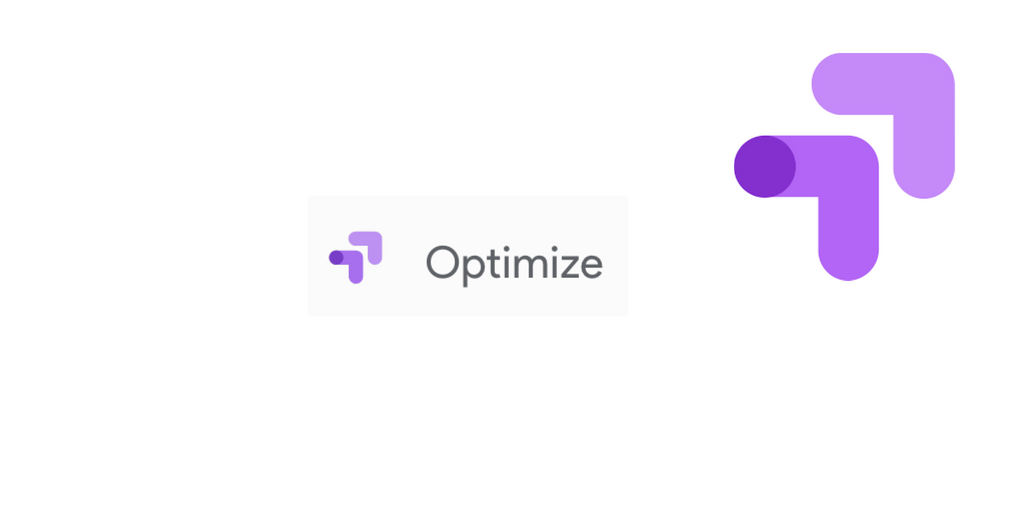Whether you’re trying to make a sale, get people to sign up to your newsletter, or download a report, conversion optimisation ensures you’re making the most out of the traffic you have, and you’re not losing any leads due to poorly written copy, a bad UX, or an unclear value proposition.
Key Takeaways:
- Increasing your conversion rate will reduce your cost per lead. Our motto: Traffic is nice. Revenue is better.
- Give each test enough time and data before calling it a win or a lose.
- Use your own research and insights, don’t just blindly follow “best practices.”
- You don’t need a big budget to make more sales with CRO
- CRO is a long-term strategy not a one-off project
- Copying your competitors does not equal success. It’s a recipe for disaster.
- CRO is not a perfect science, expect smaller wins for your first few tests.
- Don’t make changes or test without a well thought through hypothesis.
- Unsuccessful tests equal insights, not failure.
- Don’t limit success by only completing one test at a time.
10 Conversion Rate Optimisation Myths Debunked
There’s a lot of advice out there on how to boost your conversion rate, including a lot of misinformation and misconceptions. Make sure you’re not going down the wrong path and leading your CRO program to failure by avoiding these ten common CRO myths.
Myth 1: The More You Test the Better
Many believe that you should A/B test as much as you can. While A/B tests are a great way to compare the conversion rate of two different versions of a landing page, email, etc. it doesn’t mean the more tests you run, the better or more accurate your results will be. Running too many simultaneous tests can add noise to the data and make results a lot less meaningful. We recommend aiming for quality rather than quantity. Prioritise tests with a bigger potential and solid hypothesis.
Some marketers believe the more tests they run and the faster they run them, the quicker they’ll get a win. This strategy can lead to focussing on short-term results and make you miss important insights.
Ensure you give each test enough time and data to run and explore each experiment before moving on to the next.
Myth 2: CRO is Just a List of Best Practices and Guidelines
If you take away anything from this post let it be this. CRO is NOT a list of best practices and guidelines. In CRO there’s no such thing. A list of best practices is simply a list of assumptions and this goes against the very principle of conversion optimisation. Never has the phrase “when you assume you make an ass out of you and me” been more relevant. Never assume anything. If you plan a test because “you think that”, it is usually a red flag. Let the data speak to you rather than your own opinion.
You’ve probably come across one of those huge list posts titled something like “101 tips and tactics to boost your conversion rate”. With this sort of advice so common on the web, it’s easy to think that successful CRO is just a case of ticking off tips on a list.
In practice, there’s no such thing as a one-strategy-fits-all when it comes to conversion optimisation. It takes time and experimentation to figure out what works best for your particular audience, and you’ll need to try out each technique fully before moving onto the next for best results.
If you do attempt this scattershot approach of implementing a load of ‘optimisation tips’ at once, it’s likely that some won’t work and some may even be detrimental. How do you tell which are which? That’s the point – you can’t.
It’s best to take a methodical approach and go slowly. Don’t try to implement all the ‘best practices’ at once, and don’t rely on what someone else tells you is the best way to do something – use your own research and experiments.
Myth 3: You Need a Big Budget to Be Successful at CRO
There are a lot of tools and services out there aimed at improving your conversion rate, so it’s natural to think that you need all these solutions if you’re going to be successful.
The fact is that all businesses can implement CRO, no matter how big or small they are or how much budget they have. There are plenty of free tools available to get started.
It’s important to remember that while a CRO program may need some initial investment, if you implement it well, it’s almost certain to have a positive ROI. This means that conversion optimisation essentially pays for itself, often many, many times over.
Myth 4: CRO is a One-off Project
This myth tends to be a common misconception for people who work outside of your marketing or web development team – perhaps those with C-suite roles who are just looking for maximum ROI in as short a timeframe as possible.
The reality looks very different, of course. CRO is not a case of optimising your website once and being done with it. Optimisation is an ongoing process, and you need to continuously measure, analyse, and experiment to get the most out of your digital marketing strategy. You need to ensure that all members of your team understand that CRO is a long-term strategy and not a simple one-off task.
What Our CRO Process Looks Like
Our CRO process begins with a 2-4 week discovery phase followed by 3 months of testing.
Our iterative (rinse and repeat) CRO process helps us continually learn about your audience and your site, and in-turn build a richer user experience.
Typically, research and testing strategy projects are delivered within week 4 – 5.
In the first 3-weeks we undertake the audits and complete research. Your bespoke testing program will be delivered by the end of week 5.
We provide a test and result validation service for each of the tests you run during the first 3 months.
Learn more about our CRO process.
Myth 5: Copying Your Competitor is the Key to Successful Optimisation
Remember when we said there’s more to successful CRO than blindly following a list of best practices? Just because something works well for your competitor, doesn’t mean it’s going to have the same effect for you.
Reading case studies of other companies and brands that have had massive success with digital optimisation can be inspiring, and may well give you some ideas and theories to test, but you shouldn’t necessarily expect the same results.
Always use your own research and statistics to inform your CRO strategy. Remember, your business and audience are unique, and there’s no perfect recipe for success for everyone. Instead, test, test, and test to find what works for you.
Copying tactics from a competitor is like taking a piece of a puzzle from a different puzzle and trying to make it fit in yours. Odds are that it just won’t.
Myth 6: CRO Works like Magic
Some businesses learn about digital optimisation and think that as soon as they start optimising their website, their sales will skyrocket, like magic. But it’s not magic. It’s science.
While dramatic conversion rate increases are a possibility, it’s more likely you’ll see subtle results from your first few tests. However, all these small changes and small increases in conversion can add up to a significant difference over time.
Think of your CRO program as a tool to help you to learn more about your audience so that you can create better content and experiences for them. In many cases, these findings can be used outside of the web.
Myth 7: A/B Testing is Simple and Takes Little Planning
It’s not hard to come up with an idea for an A/B test – anyone can say ‘change that button from red to blue’ or ‘re-write that headline’. However, the real skill of CRO comes not with running an individual test, but rather running multiple experiments over a longer period and knowing how to analyse and interpret the results.
A/B testing and CRO is just a small part of your overall marketing strategy, and it’s important to plan your tests carefully to gain long-term insights. Don’t make changes without first having a solid and valuable hypothesis. This is a crucial step for each CRO experiment.
Myth 8: Unsuccessful Tests Mean You’ve Failed
So let’s say that you run an experiment testing one of the previously mentioned hypotheses: you change your headline, for example. After running this test for several weeks, your conversion rate drops. So does this mean your experiment failed?
Not at all! The point of these experiments is to help you to learn more about the behaviour of your audience. Scientists don’t expect all their hypotheses to be true, and marketers shouldn’t, either.
An unsuccessful test is not a ‘failure’. Each test you run will give you more information about what works and what doesn’t work, and help you to create more optimised content in the future.
Myth 9: Statistics Are All You Need to Focus On
Statistical significance is an important part of CRO, but it’s not the be-all and end-all.
If a result is statistically significant, it means it’s unlikely to be a random result. You may have read that you should wait for a 90% or 95% significance level to have confidence in the results of your test. But this all depends on your sample size and the length of time you’re running the experiment for. There is a difference between statistical significance and validity. We want both.
Maybe you reach 95% significance in the first couple of days of an experiment, but your sample size is not big enough to make any meaningful conclusions. You might have to wait for several weeks to get a better representation of your audience, by which time this percentage may have dropped off. Always give your experiments enough time to play out.
And remember: you need to make sure you understand the data you’re looking at.
Traffic and behaviour on a website fluctuates across a normal week. We prefer to have 3 occurences of each day of the week (minimum) in order to make a test valid.
Myth 10: You Should Only Make One Change per Test
It’s common advice for A/B testing that you should change only one thing per test; however, you’ll be limiting your success if you follow this advice.
Yes, indeed it’s easier to tell which change resulted in a conversion rate change if you’re only changing one element at a time. But there are probably thousands of single elements you can change in one landing page or email. By the time it takes you to test them all individually, your campaign will probably be over.
What we are trying to do is to test a hypothesis, not a change. Multiple changes on a single user experience could be on the same test if they are all trying to prove or disprove the same hypothesis.
The less traffic you have, the bolder the change should be if you want to be able to perceive a difference between A and B. A bolder change usually means multiple elements on page.
Conclusion
CRO is an ongoing process that helps you to learn more about your customers, address their fears and questions, and remove barriers to them hitting that buy button. There aren’t any quick fixes and easy solutions. CRO isn’t a magic bullet for your business but even small changes can add up to a big difference to your conversion rate and your profits. Avoid these CRO myths and instead focus on your tests to achieve a better conversion rate.















